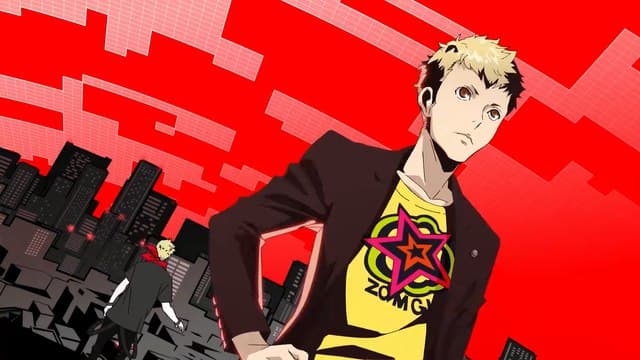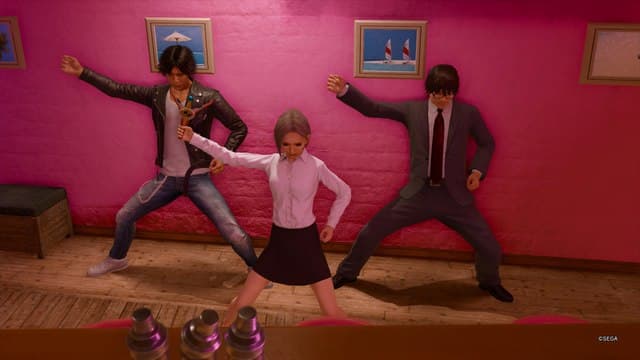Being a teen is tough. Being a teen who has to fight mysterious shadows using manifestations of your inner psyche in an infinite dungeon that exists only in a frozen hour at midnight is even tougher. So what better way to escape those struggles than to dance, dance, dance!
Editor’s note: This review primarily covers Persona 3: Dancing in Moonlight. Its sister game, Persona 5: Dancing in Starlight, is largely identical. Most of the differences are purely cosmetic, with a few lines of dialogue reflecting the games’ different casts.
Atlus’ Persona 3: Dancing in Moonlight, a sequel to 2015’s Persona 4: Dancing All Night, puts the teens of 2006’s Persona 3 into a far less dangerous nighttime world filled with no fighting, only rhythm. Its counterpoint, Persona 5: Dancing in Starlight, provides a nearly identical experience, only with the phantom thieves of Persona 5 as its dancers. Together these two games provide a delightful extra dose of beloved characters from the Persona series with satisfying rhythm gameplay.

Shut Up and Jam
Dancing in Moonlight‘s predecessor included a story mode to justify why the previously murder-solving teens were suddenly accomplished dancers. Dancing in Moonlight doesn’t bother with this. There is no visual novel story mode in Dancing in Moonlight. The reason given for their dancing is wonderfully thin.
Why do they need to dance? Because it’s fun! Why are they able to dance skillfully despite no formal training? Because of the power of imagination! Stop asking questions. Another dose of story involving the Persona 3 cast might have been fun, but I was happy enough to just get to spend time with them again through a series of conversations between characters that unlock over time.
The dancing stages themselves don’t break any particularly new ground in terms of rhythm gameplay. On-screen input cues align with the outer edges of the left and right buttons on the PlayStation 4 controller or Vita. The difficulty curve of the rhythm sections is steady and satisfying; I’m a decent enough player at rhythm games, and I breezed through Easy Mode, found myself comfortably challenged by Normal, and got my ass frequently kicked on Expert.

Appreciate the Show
In a way, that encouraged me to improve my skills instead of giving up to frustration. There’s an even higher mode of difficulty, All Night Mode, but it proved laughably beyond my ability. I suspect it would provide a refreshing amount of challenge for a more seasoned rhythm game aficionado.
My one issue with the actual gameplay arose from the size of the screen I was playing on. Persona 4: Dancing All Night was only available for Vita. After playing Persona 3: Dancing in Moonlight with a PS4 on a 36″ television, I can say the experience is more suited to the smaller screen. It doesn’t hurt that the Vita’s OLED screen naturally has less input lag than most HDTVs, either.
But because Persona’s input markers radiate out from the center of the screen, it was difficult at higher levels of play to spread my focus and absorb all of them at once. My eyes darted around the screen trying to catch them all, and in my focus on hitting the beats right, I was unable to appreciate the whole point of the exercise: the dancing. Fortunately, every stage has a replay mode where I could actually enjoy the dance moves without trying to catch all the beats.

Comforting Silliness
The dancing itself is fun to watch, too. Each character moves in a different style suited to their personality. As a bonus, and further incentive to improve, new outfits and accessories unlock when you reach certain milestones. I hit a certain number of “Perfect” notes, for instance, that unlocked a social scene between some characters.
Once I watched that, I was rewarded with some new outfits. All the clothes from the original Persona 3 are included, in addition to some interesting and entertaining new ones—plus fun accessories like cat ears, comical mustaches, and dog tails. Call me ridiculous, but I can’t resist the appeal of putting a robot girl in a clown nose and making her dance.
Silliness aside, it just felt good to return to the characters of Persona 3. Persona 4 has numerous spin-offs, but its predecessor has felt comparatively neglected. Only a few characters from the game have reappeared elsewhere—almost always alongside Persona 4 characters.

Say Hello to Your Friends
The original voice actors are back (with optional Japanese voices) and hearing them felt like a reunion with forgotten friends. The writing for the social conversations is light, fun, and true to character. I was happy to connect with the SEES teens again. I was even gladder the setup didn’t involve them regularly shooting themselves in the head.
Persona 5: Dancing in Starlight’s characters feel much the same. Although it hasn’t been long since they were in the spotlight. The localization of dialogue in Dancing in Starlight feels sharper, more focused, and more rich in character than it did in actual Persona 5 (which was infamously stilted). It’s perhaps a little unfair to judge, what with the significantly reduced amount of text to translate and localize, but I warmed up to the characters much better with the improved writing.
Together, Dancing in Moonlight and Dancing in Starlight are simple to summarize and simple to recommend. I like Persona. I like rhythm games. So, not shockingly, I liked Persona 3: Dancing in Moonlight (and its sister game, though I prefer the third game’s cast). While I might have found it a little easier to focus on with a smaller screen, I still enjoyed its hot jams and sick moves on a full-sized TV. And nothing beats putting someone in cat ears and making them dance, dance, dance.


